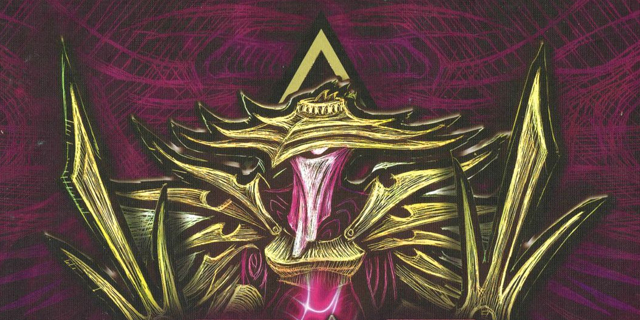
2012 kicked off in a big way for the board gaming community, as Gary Games finally unleashed the next standalone edition of Ascension in the form of Storm of Souls. Much like Chronicle of the Godslayer, Storm is a hundred-card center deck and enough “always available” and starter cards to accommodate up to four players. Storm can also be combined with Chronicle and/or its expansion Return of the Fallen to hold six players. As this is a “base” release, Storm also includes a new and slightly-revised playing board, along with the usual array of red and white honor crystals. Sadly, a more streamlined version for those of us who already have more crystals than we could ever possibly need and little interest in the board is not offered.
Storm continues the background narrative of the overall Ascension world of Vigil and its (apparently) constant turmoil; in the wake of the events represented by Return, Vigil is now beset by the restless spirits how that Kythis, the Gatekeeper (Return‘s purchase promo card) has gone missing — hence the titular “storm of souls”. A large portion of the monsters in Storm are spirits of some kind, although with one exception it is the more corporeal enemies that bear one of Storm‘s new mechanics: trophy. When defeating a trophy monster from the center row, the player earns his honor reward right away, but keeps the monster card in front of him as a trophy; at any point during his turn or a future turn, he may banish the trophy to gain the listed effect. This is a huge step up over the way many of these effects were handled in the previous sets, as often the bonus would be of negligible use right away (e.g., gaining runes, drawing a single card) and effectively wasted; now power-focused strategies have a bit more control over their actions. Storm even includes a new type of “always available” trophy monster, the Fanatic, to sit up by the Cultist, Mystics, and Heavy Infantry; since each player could potentially have one (and only one) Fanatic trophy at once, Storm wisely includes six copies. But to really understand the Fanatic, I have to explain Storm‘s other major feature: events.
Five event cards are in the center deck, one for each faction and one for the monsters. When these appear in the center row, they shift to their own zone and banish any previous event to the void. Each event has a global effect that adjusts the way the game is played; the Hedron Rising event, for example, lets players treat all constructs as if they were Mechana constructs, while the Void Rising event bestows additional honor whenever a creature is defeated. Each event also has an “event trophy”, which is the reward that players get when they cash in their Fanatic trophy; obviously Fanatics are less useful than Cultists until an event is revealed, but it can’t hurt to have one ready just in case if you have the extra power to spare (the Fanatic is a bit tougher than the Cultist) and nothing better to spend it on. Each faction has a pair of cards that get stronger when their respective event is the current event; these are easily identified by the faction symbol “watermark” behind their text.
As for the factions themselves, they have each learned some new tricks. The Void has a recurring theme of allowing you to banish cards from your hand for a small benefit, and the Mechana have found ways to generate effects from destroying their own constructs (much like the effect of Reclamax from Return) and replaying them. The Enlightened, meanwhile, have enhanced their card drawing ability by adding discarding to their strategy while the Lifebound receive Storm’s last new ability, Unite. Unite is similar to the Runic Lycanthrope’s effect from Chronicle, providing a bonus if you have played another Lifebound hero this turn; Unite will also apply if you play a Lifebound hero after the initial Unite card — although you only get the Unite bonus once per Unite card, not every time you play another Lifebound hero, putting the ability somewhere between the Lycanthrope and Return’s Dandelion Witch. It is also worth noting that if the Lifebound event Ogo Rising is in play, then the first hero played each turn is treated as a Lifebound… Finally, the enters-the-center-row Fate mechanic makes a much-welcomed return.
All in all, Storm continues Ascension‘s tradition of solid deck-building gameplay. Special mention must be made of the improved art on all of the cards in the set — with the exception of the Cultist, even the starter and always-available cards have new artwork, and it is all amazing. Not that the art in the original set was bad by any means, but Eric Sabee had much more time to devote to the production of Storm and it shows. Storm also has the same slightly smaller card size of Return, which means that combining it with (early editions of) Chronicle — and many promo cards (including Kythis, oddly) — will require sleeves. For those who aren’t fan of sleeving and shuffling that many cards (and I am not), you can actually combine Storm with just Return unsleeved just fine and still provide enough cards to support six players — and as a bonus, it will all fit in the “travel box” that was originally offered to hold a sleeved-up Chronicle.
Ascension: Storm of Souls should be on shelves now (assuming stores haven’t sold out already) and retails for about $40. If it doesn’t finish highly on my year-end best of list, then 2012 will have been an incredible year for board gaming.



















